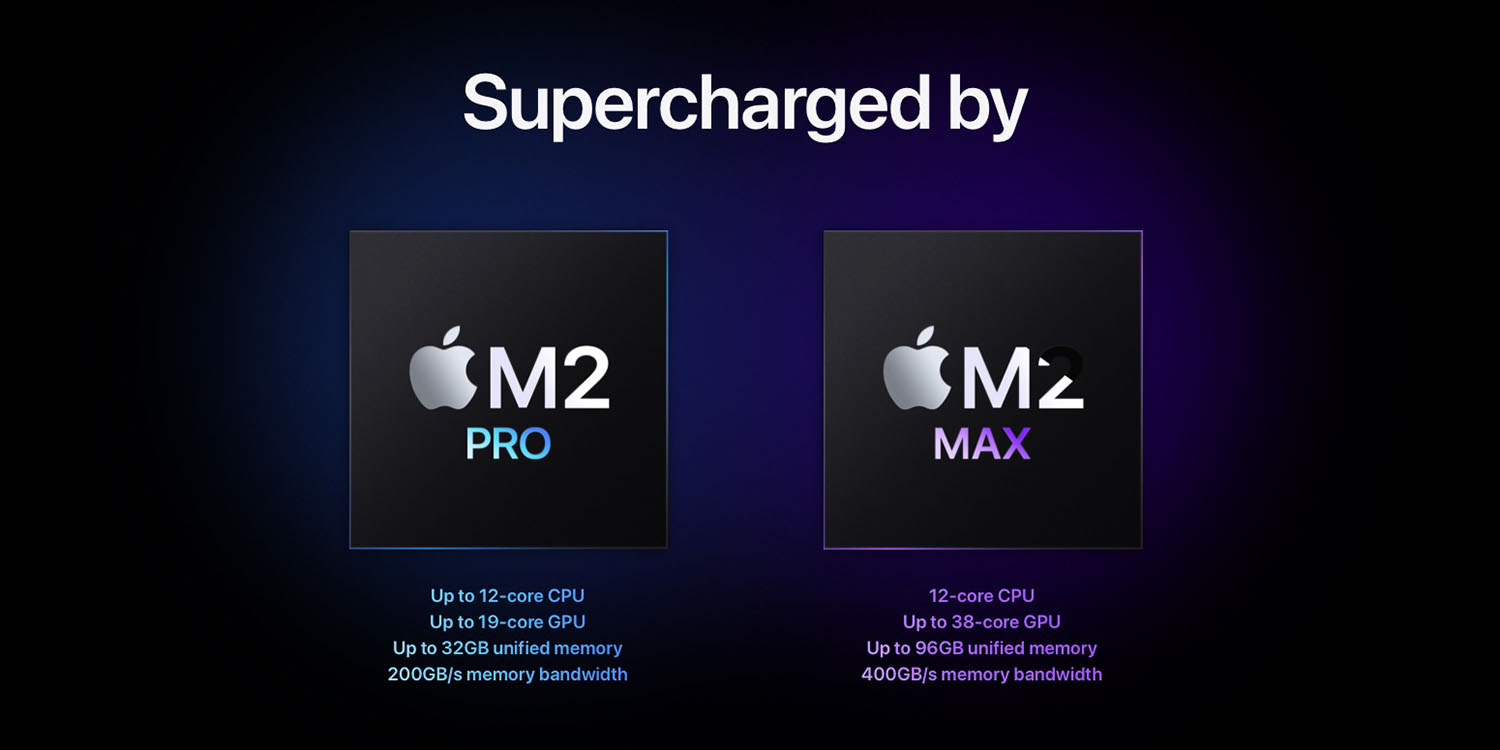
One of the decisions you need to make when buying a MacBook Pro or new Mac mini is the chip: M2 Pro vs. M2 Max. We’ve seen what Apple has to say about the differences, and how they stack up in benchmark rankings.
A new piece today looks beyond the benchmarks to how the two chips compare when used for real-life video work in the 16-inch MacBook Pro. It’s not exactly a detailed comparison, but it does provide a pointer to the three usage cases likely to justify the M2 Max …
M2 Pro vs. M2 Max: Battery life
The first thing that jumped out at me in Monica Chin’s piece for The Verge is that the more powerful chip means taking a reasonably big hit to battery life.
I averaged close to 14 hours of nonstop use on the M2 Max model with my workload [which] largely involves Chrome tabs, Google docs, and some streaming […]
I averaged closer to 17 nonstop hours on the M2 Pro model. In practice, this means I can use it on battery for two to three days at a time, plugging it in like every so often.
For me personally, once you hit true all-day life, then this kind of difference is pretty academic: There’s never going to be a time when I’m not charging overnight, even in the most mobile-centric use. But if you keep a MacBook for quite a few years, it might be worth thinking about how the difference may play out as battery performance degrades.
CPU, GPU, unified memory
If you’re buying the 16-inch MacBook Pro, then both chips have the same 12-core CPU, so you don’t get any direct benefit from the M2 Max for processor-intensive tasks. However, if you want more than 32GB of unified memory, then only the more powerful chip gives you the options of 64GB or 96GB.
The GPU is the real difference between the two, the M2 Pro giving you 19 cores, while the M2 Max can be configured with 30 or 38. The M2 Max also gets you two video encoding engines, rather than one.
Real-life video work
Chin said that her 38-core model makes a real difference for video work.
The M2 Max is noticeably faster in video work. My experience using it to edit was incredibly speedy. It flew through playback and exports. If I were a video editor (assuming my employer was footing the bill), I’d absolutely want one of these things.
The M2 Pro was not quite as consistent. I exported the same five-minute 4K video a number of times on it and could see a time anywhere from around the two-and-a-half minute mark to over six minutes. The process did not get consistently faster or consistently slower as I went on testing; there was no rhyme or reason for the varying times. What I did notice was that the M2 Pro often got hung up on graphics that the M2 Max was able to breeze right through. Becca Farsace, our senior video producer, had the same experience exporting a different video file.
The conclusion? Buy the M2 Max for:
- 3D animation
- 8K video editing
- 4K video editing for projects of more than one hour
Everyone else should be just fine with the M2 Pro.
The earlier video goes into much more detail.
FTC: We use income earning auto affiliate links. More.






Comments